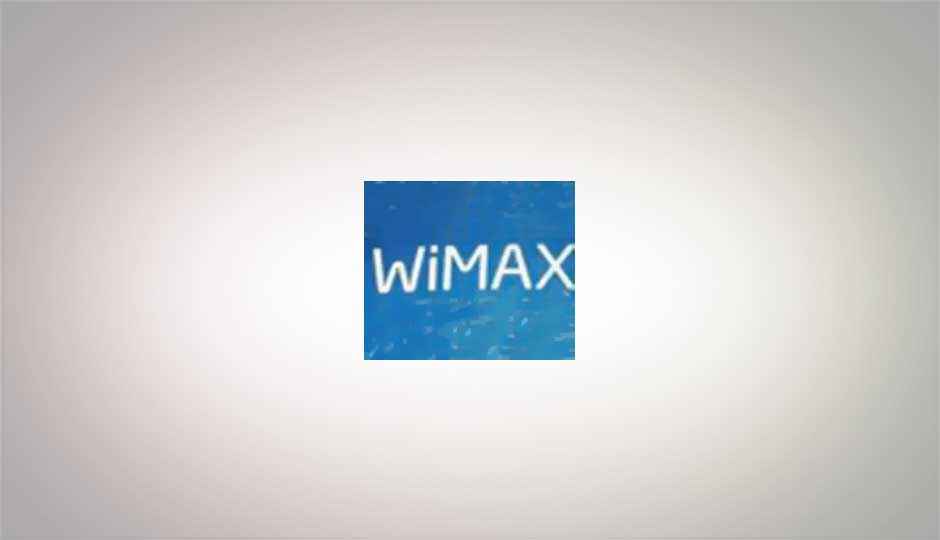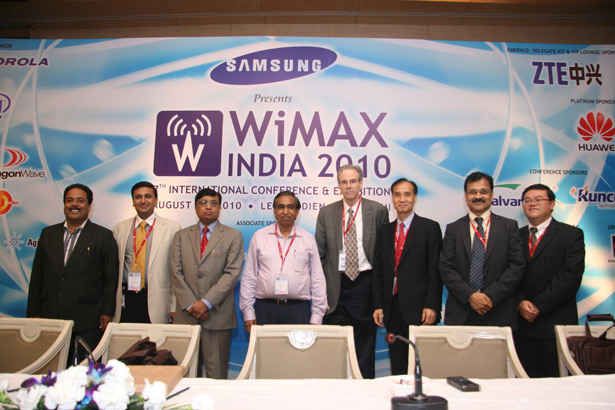WiMAX proposed as the ‘low cost high bandwidth’ 4G technology for the Indian masses


WiMAX (Worldwide Interoperability for Microwave Access), a fourth-generation mobile wireless access technology, has slowly been sprouting its hot spots across the world, and now has a presence in 149 countries, spanning many types of devices. The WiMAX India 2010 conference on Friday examined the vital role of WiMAX and its ‘low cost high bandwidth’ quality in bringing mobile broadband to the masses of India, and to this end, brought both industry representatives and telecom officials together as panellists.
Dr. Hung Song from Samsung showcased tiny modems capable of transforming laptops, cell-phones and tablets into 4G wireless devices. Dr. P.S. Tang, the managing director of Packet One International (Malaysia’s leading WiMAX provider), spoke about how very inexpensive WiMAX cell-phones were becoming, with prices as low as $50, that could soon become as shockingly affordable as $20.
Then, to put forth the need for inexpensive and widespread access to mobile broadband, DoT Secretary P. J. Thomas spoke of a government programme that aimed to connect more than 600,000 villages in the country, and encompass more than 250,000 panchayats: “The mobile revolution is now rolling & WiMax will accelerate it.” Seeking to caution the manufacturers and operators present however, Thomas warned: “doing business in India is different from that in any other country. Even the public sector BSNL has learnt it the hard way.”
Some interesting figures were rolled out by BSNL’s director of consumer mobility, who said that his company currently provides more than 60 percent of the nation’s 12 million broadband connections (6000 blocks), and estimated that by next year, BSNL’s share would increase to over 11 million connections.
Puneet Garg, VP Technical from Bharti Airtel, talked about how new technology developments were now allowing them to set up base stations and other required infrastructure at very low costs, allowing them more widespread coverage across even the rural sectors of India. He spoke of how with WiMAX and its low cost high bandwidth technology, costs would reduce further, predicted a dramatic improvement in quality of service.
The WiMAX Forum President and Chairman, Ron Resnick, also spoke a few words of caution to manufacturers and operators like the DoT secretary before him, and advised them to adopt a very flexible architecture that would enable them to reduce the time to market, and, in the process, create millions of jobs. Resnick said he’d seen the “vast” opportunity for WiMAX in India almost 8 years ago, and that there already was lot of infrastructure in place that could enable it.
Subhendu Mohanty of Motorola, a company that provides WiMAX solutions in more than 40 countries in the world, spoke WiMAX’s numerous advantages, and how it was a “social responsibility” that must be provided to the people. He hoped that the government would reach its target of 100 million broadband customers soon, and talked about the need for operators to plan aggressively, and create a vibrant eco-system, which also focussed on content and application development.
While much of what’s been discussed is nothing startlingly new, and in fact, quite reminiscent of the LTE conference a couple of months back, the WiMAX India 2010 still served as a stark reminder of how far we have to go to achieve our connectivity dreams, as well as a glimmer of hope we’re on the right trackm taking our first steps towards widespread 4G connectivity – both WiMAX and LTE Advanced – in a very, very measured manner.
